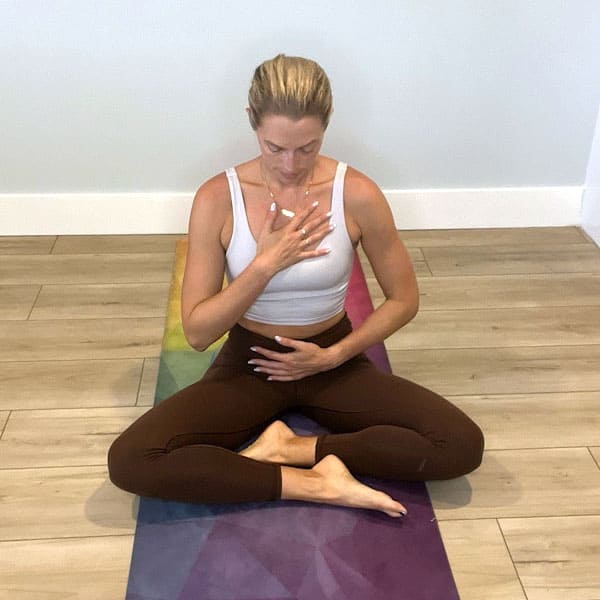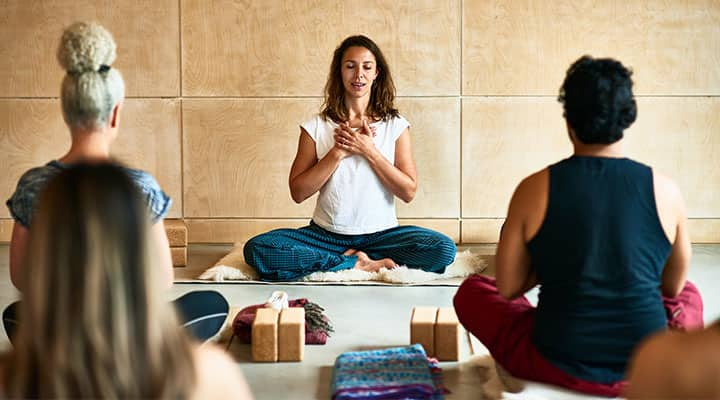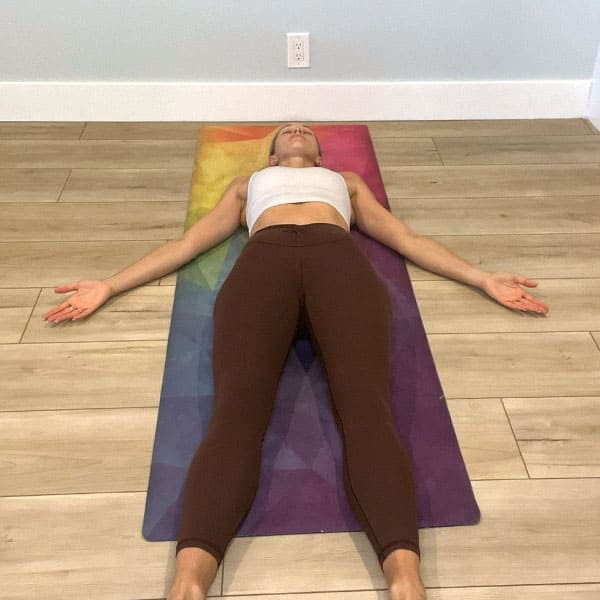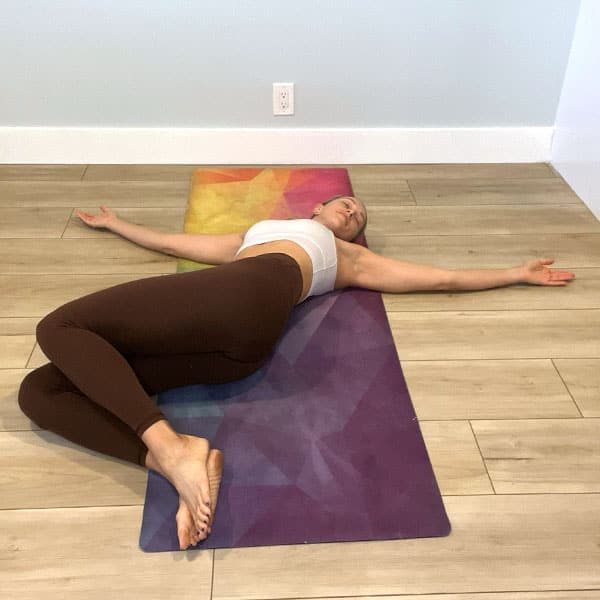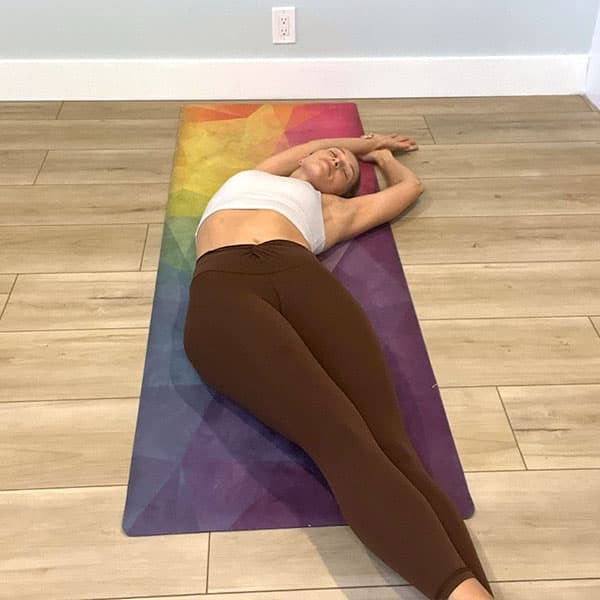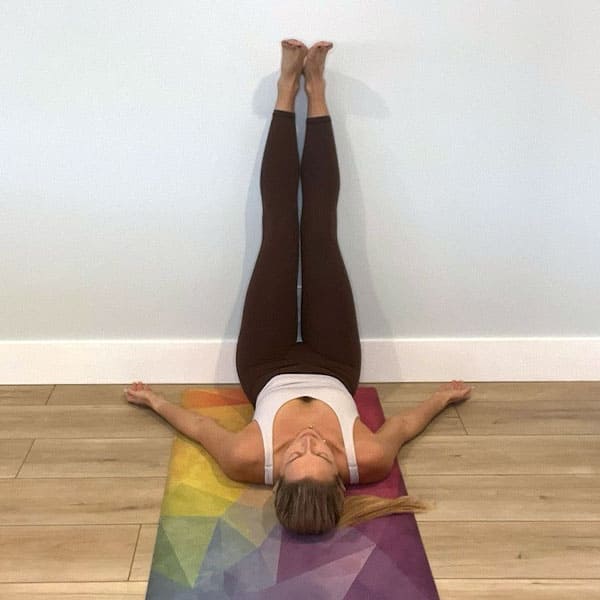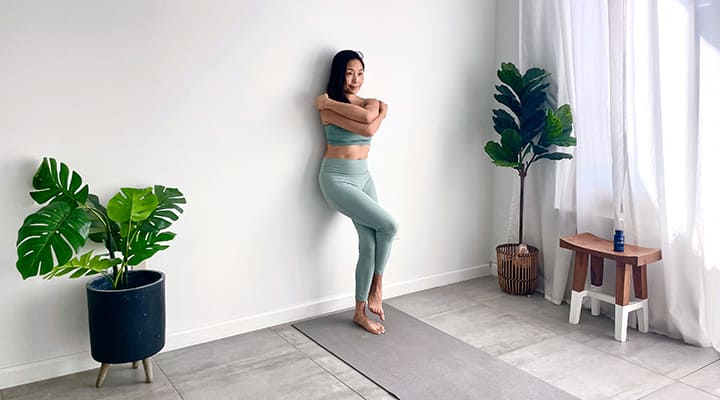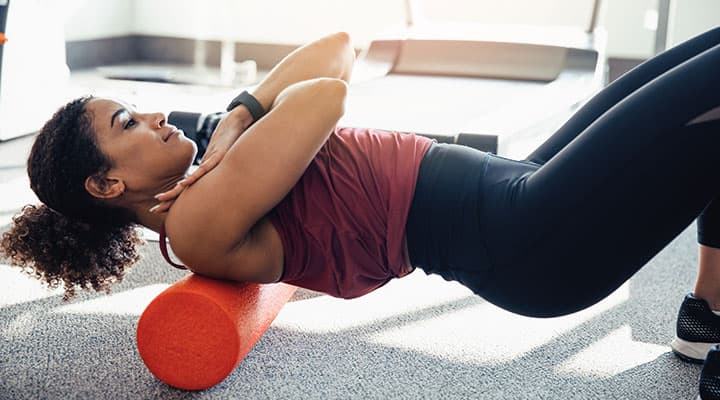
Yoga for Relaxation: Calming the Mind and Body
Published: September 2023
Looking for a mind-body exercise that can help quiet your thoughts and relax tense muscles? Strike a pose! Yoga has been shown to promote stress management, healthy sleep, healthy blood pressure and many other aspects of health.
Certain styles of yoga are just as beneficial for mental health as they are for physical health because they include meditation to promote mindfulness and full-body relaxation.
But if you're new to yoga or find the idea of "relaxing on purpose" a little, well, stressful…not to worry! We've got a seven-step plan for your most relaxing yoga practice ever. Get ready to exhale tension and inhale inner peace with these calming yoga poses.
How does yoga promote relaxation?
Yoga may be better known now for its challenging asanas than for its luxurious stretches, but it has long been used for mindfulness and meditation. Yoga's deep breathing and flowing postures make it an ideal relaxation technique. Research supports yoga practice as a way to both relax and to help maintain healthy blood pressure. Yoga also promotes healthy sleep patterns, and a scientific review found a direct correlation between sleep quality and the amount of time spent in yoga class.
That doesn't mean that simply grabbing a mat and changing into yoga pants will instantly melt your troubles away! There are certain styles of yoga that encourage more relaxation and are safe for all levels—but you have to know which these are, and which ones are less conducive to this state of zen. Additionally, many people come to yoga to relax and release tension, but they have a hard time calming their body and mind to ease into a peaceful state. Practicing mindfulness with yoga can help you reach this point. Here's how to use yoga to relax.
How to use yoga to relax: 7 steps
Set yourself up for self-care success with these tips.
Dress comfortably.
What you wear for your yoga exercise matters—not because anyone is judging your style, but because the wrong gear can be uncomfortable and distracting. Find soft, comfortable clothing. Make sure it's not too loose or too constricting. Add layers to your attire if needed during your exercise. Some postures can lower your body temperature as you relax more deeply.Set the tone.
Seek a quiet space with natural lighting. Shut down your technology or set it to do not disturb. Step away from busy energy (such as kids, partner or roommate). As you set up your yoga mat and yoga equipment, focus on the present moment and the mindfulness ahead.Create an intention.
Honor yourself and your time on the mat with a mindful phrase or mantra. This can be a word, a short phrase or a person.Seek guidance.
If you're like me, sometimes forcing yourself to relax backfires. That's why it's helpful to go to a studio class (or online class) with a certified yoga instructor who can mentor your yoga practice—and motivate you on those days when you're just not feeling it. Pro tip: when reviewing the studio schedule, look for yoga classes designed to promote relaxation; a few styles you may enjoy are Yoga Nidra (meditation for sleep), restorative yoga (where your body is passive and completely relaxed), or Yin Yoga (a series of calm poses held for longer periods of time).Move your body.
Yes, it sounds counterintuitive, but adding a warm-up or breathing exercises before your yoga sequence allows the body to fidget and release tension until it is ready to accept and honor relaxation. There are many health benefits to adding more movement to your daily routine. Just remember to be kind and accepting of your physical needs and limitations.Go with the flow.
After (or in place of) your warm-up, pick a few asanas (or yoga postures) and flow slowly through your body. For example: Cat-Cow, Downward Facing Dog, Sphinx Pose or Balasana (child's pose). These yoga poses help open your hips and move and stretch your spine.Breathe.
Remember this is your time for self-care. Don't feel rushed or pressured into meditation and exercise. If your mind isn't ready to settle down, that's OK. Take the time to slow your breathing as you relax on your yoga mat. Try 4-7-8 breathing, where you inhale for 4 counts, retain the breath for 7 counts, and exhale with an open mouth for 8 counts. Breathwork is essential for releasing tension and encouraging complete relaxation.
Explore Our Best Stress Management Supplements
The best yoga poses for relaxation
Now that you've prepared your space and your body for deep relaxation, let's talk about yoga poses that are calming for people of all skill levels. You can do these on your own or with a yoga instructor.
- Savasana, or corpse pose. This yoga pose can start and finish your practice. Lie flat on your back with legs relaxed and arms by your side. This pose is used specifically in Yoga Nidra, which combines it with guided mental imagery to promote a state of "yogic sleep," or deep relaxation.
- Supine twist. This yoga pose is a popular one. Lying flat on your back, pull your knees to your chest and slowly drop them to one side of your mat. Look to the opposite side and stretch your arm out to achieve the twist. Relax into the pose and stay there for 4-6 breaths before switching sides.
- Konasana, or angle pose. This posture helps lengthen your side body and invites more space to breath and relax. Stand tall on both feet. Lift one arm to the sky, then bend over to the side. Keep your chest open and lifted. Soften your gaze as you bend over. Hold and breathe deeply before switching sides.
- Marjaryasana, or cat pose. This yoga pose opens up space through the back of the heart, creating more movement for your breath to roll down your body. Start with your hands and knees on your mat. Drop the crown of your head toward your yoga mat and round your spine "catlike" up to the sky. Breathe slowly, then relax.
- Banasana, or banana pose. Yin Yoga is one of my favorite yoga styles for relaxation, and this pose is a great place to start. Lie flat on your back. Step your right ankle over your left ankle. Your left hand holds your right wrist. Move your feet and hands to the left side of your mat, making a banana shape and opening up the right side of your body. Keep your gaze to the ceiling. Feel free to close your eyes. Practice deep breathing for 10 breaths before switching sides.
- Paschimottanasana, or caterpillar pose. This Yin Yoga pose is a great variation to relax your upper body. Sit on your tail bone, legs extended in front of you. Lift your upper body on the inhale, then exhale, reaching and lengthening toward your toes. It looks like a seated forward fold.
- Viparita Karani, or Legs Up a Wall. This yoga pose is a great place for meditation and relaxation. You might want to use extra yoga equipment to assist you in this posture on your mat. A bolster can be placed under hips. A block can also support your back. Try a sandbag on your lower belly or sacral chakra. Take deep breaths. Cover your eyes and add essential oils to your meditation while in this pose.
Remember this is your time—make it your own. Create and honor your time on your mat. Use your breath to ease into a beautiful, relaxed state of meditation.
Can yoga help support stress management?
Many embrace yoga as a healthy form of stress management and exercise, and research on the effects of yoga classes backs up these health benefits. A randomized controlled trial of mental health professionals found yoga classes promoted stress adaptation among study participants, and they experienced less work-related stress compared with participants who did not do yoga. A review of 42 studies also found support for the practice of yoga asanas for healthy regulation of the sympathetic nervous system, which controls your heart rate, blood pressure, breathing, sweating, and other functions. Yoga may also support a healthy mood and help maintain healthy cortisol levels.
Yoga isn't your only tool in managing everyday stress, though. Adding meditation and journaling to your weekly routine can invite an emotional and mental release, as well.
Nutrients For Stress Management
Having trouble learning how to relax? Certain dietary supplements may help you manage the challenges of life. Nutrients such as ashwagandha, lemon balm and L-theanine have been studied for their calming properties and support for a healthy mood.
Other health benefits of yoga
Regular yoga exercise has been shown to help promote endurance, strength, calmness, flexibility and overall well-being in participants.
The practice of yoga has particular benefits for cognitive function and health. Studies show yoga training may have neuroprotective effects and support brain health and cognitive function as we age. Research also supports yoga practice for maintaining bone health, heart health and better quality of life.
If you aren't sure what your body needs, take Life Extension's health needs quiz to get a recommendation tailored to you!
About the Author: Based in South Florida, Mallory Hope is a certified practitioner of yoga therapy, which enables yoga postures and yoga logic, breathing and meditation to create a unified mind/body connection and to facilitate the internal and external healing of the body. She is 200 Hour RYT, Yin Certified, Meditation Certified and Barre Certified. You can find her on Instagram at @malloryhopes.
References
- Hishikawa N, et al. "Yoga-plus exercise mix promotes cognitive, affective, and physical functions in elderly people." Neurol Res. November 2019. https://pubmed.ncbi.nlm.nih.gov/31588880/
- Krause-Sorio B, et al. "Yoga Prevents Gray Matter Atrophy in Women at Risk for Alzheimer's Disease: A Randomized Controlled Trial." J Alzheimers Dis. 2022. https://pubmed.ncbi.nlm.nih.gov/35275541/
- Li J, et al. "Yoga for secondary prevention of coronary heart disease: A systematic review and meta-analysis." Complement Ther Med. March 2021. https://pubmed.ncbi.nlm.nih.gov/33338581/
- Lin SL, et al. "Effects of Yoga on Stress, Stress Adaption, and Heart Rate Variability Among Mental Health Professionals—A Randomized Controlled Trial." Worldviews Evid Based Nurs. August 2015. https://pubmed.ncbi.nlm.nih.gov/26220020/
- Pandi-Perumal SR, et al. "The Origin and Clinical Relevance of Yoga Nidra." Sleep Vigil. 2022. https://www.ncbi.nlm.nih.gov/pmc/articles/PMC9033521/
- Park SH, Han KS. "Blood Pressure Response to Meditation and Yoga: A Systematic Review and Meta-Analysis." J Altern Complement Med. September 2017. https://pubmed.ncbi.nlm.nih.gov/28384004/
- Pascoe MC, et al. "Yoga, mindfulness-based stress reduction and stress-related physiological measures: A meta-analysis." Psychoneuroendocrinology. December 2017. https://pubmed.ncbi.nlm.nih.gov/28963884/
- Wang WL, et al. "The effect of yoga on sleep quality and insomnia in women with sleep problems: a systematic review and meta-analysis." BMC Psychiatry. May 2020. https://pubmed.ncbi.nlm.nih.gov/32357858/
- "The physical benefits of yoga." Harvard Health Publishing. December 2019. https://www.health.harvard.edu/staying-healthy/the-physical-benefits-of-yoga
- "Sympathetic Nervous System (SNS)." Cleveland Clinic. June 2022. https://my.clevelandclinic.org/health/body/23262-sympathetic-nervous-system-sns-fight-or-flight


